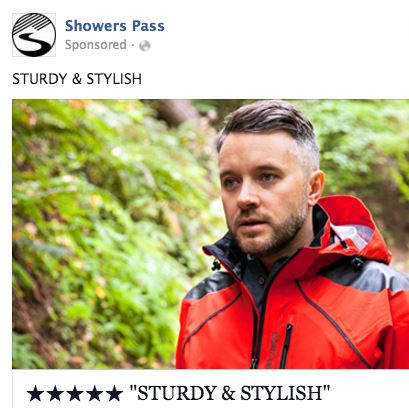Leveraging User Generated Content Campaigns To Drive Facebook Sales

Retailers understand the power of product reviews and customer feedback. But if you’re not leveraging user-generated content campaigns to drive engagement and conversions across social networks, like Facebook – it’s likely you’re missing on out a pretty big sales opportunity.
“We as media consumers have grown so accustomed to seeing candid content while scrolling through social media. This makes branded content stick out like a sore thumb,” Joanna Alter, Co-marketing Manager at Yotpo said.
 There is a stark difference in tone between staged ads and the surrounding posts, which means that those ads are easily ignored.”
There is a stark difference in tone between staged ads and the surrounding posts, which means that those ads are easily ignored.”
According to Yotpo, including user-generated content (aka authentic customer reviews and photos) in Facebook ads allows your ads to blend in with the native social content and increases visibility.
“With user-generated content in your Facebook ads, you do not need to say how great your brand is because your happy customers say it for you.”
“Consumers trust the word of past buyers over branded content because it is more reliable and more relatable. In addition to getting more eyes on your Facebook Ads, user-generated content also provides social proof that leads to more clicks and increases the value of each ad to your business.”
A Facebook case study shows that adding user-generated content to Facebook Ads increases click-through rate by 300%, and cuts both cost-per-click and cost-per-acquisition costs by 50%.
“As the biggest social platform, Facebook is the perfect place to amplify the impact of social proof. Leverage user-generated content in Facebook / Instagram to allow customers to identify with and influence each other.”

User-generated content can include videos, photos, testimonials and more. With the amount and variety of submitted content growing each day – how do retailers decide which content is best for their advertising strategy?
According to a study by Yotpo, the winning form of content is still customer reviews, with 43% of consumers reporting that this is the most effective form of user-generated content (as seen in the data below).
It’s important to note that 57% of consumers say that visual content – such as customer photos and videos – are also extremely influential to potential customers.

We spoke with the experts over at Yopo to discuss the best practices for incorporating UGC into your Facebook ads:
Static ads are best used for bringing people to landing pages or apps.
As with any kind of Facebook Ad, content and viewer attention span are limited, so be deliberate with your word choice, the page you are linking to and the visual content you use. Make sure that your value messaging and call-to-action are immediately clear.
When someone sees your static ad, they should know if you are directing them to a to a landing page or a product. There shouldn’t be any post-click surprises.

Furthermore, the landing page or app that you are directing people to should be ready to handle a big influx of traffic. Defining your target audience well and perfecting your ad content and creative increases both the quantity and quality of traffic.
If your page crashes with the uplift in page visitors, you will lose a lot of the positive impact from your ad.
Facebook users see hundreds of updates with each visit, based on likes, hides, and scrolling behavior. Eye-catching visual content that evokes an emotional reaction increases your chances of being noticed by your potential customer base and bringing traffic to your page.
Dynamic ads are a hugely impactful tool for online retailers that allows you to display tailored content to Facebook visitors depending on their behavior on your store, ensuring that the right products are shown to the right people.
For example, if someone visited a product page on your store for a pair of sunglasses and then left your site without purchasing, you can ensure that they see an ad for that same pair of sunglasses the next time they visit Facebook.
Dynamic ads allow businesses to take targeting to the next level of personalization by customizing ad content to each person’s product and precise point in the buyer journey. The Facebook pixel continuously reports which specific product IDs are viewed, added to cart or purchased.
This information is highly valuable to eCommerce stores.
If someone visited a beard oil product page but did not make the purchase, you may want to show them a dynamic ad with a great customer photo or a rave review (as seen in the example below).

If they did purchase the beard oil, you can use dynamic ads to upsell and cross-sell by showing them, for example, a small comb to go with their new beard oil.
Dynamic ads make retargeting via Facebook scalable. Once you create the dynamic ad template, Facebook is able to pull the relevant product ID, name, description, landing page URL, image URL and availability status, and fill the template with that information.
This makes the microcontent on your website such as product descriptions all the more important because it will be seen by a hyper-targeted and highly qualified audience. Microcontent like website and email copy is an opportunity to let your brand personality shine and attract people to your brand community.
In general, Dynamic ads are a highly effective tool for any retailer, with retargeted customers being 70% more likely to convert.
Check back next week when we discuss Instagram user-generated content.
